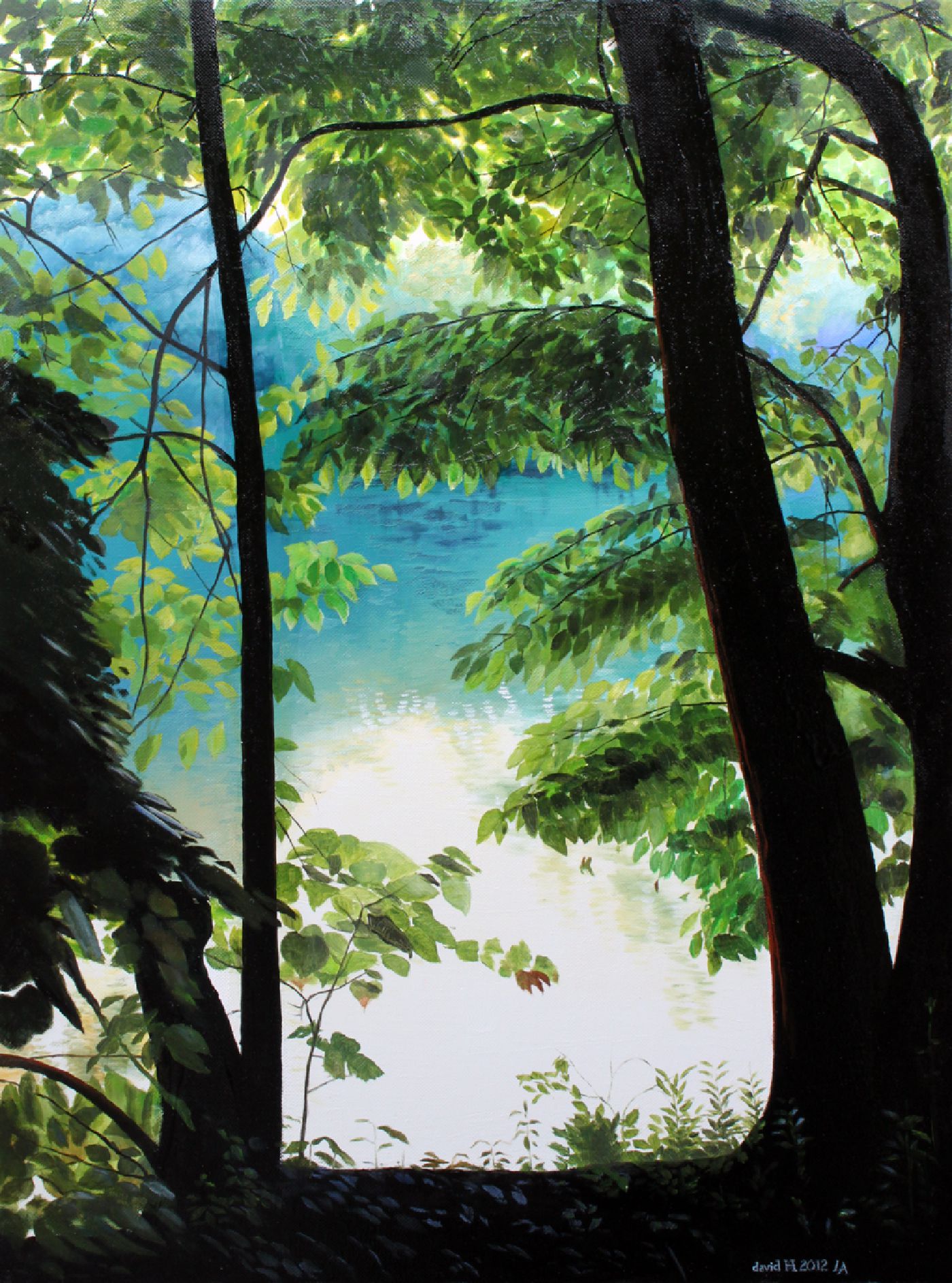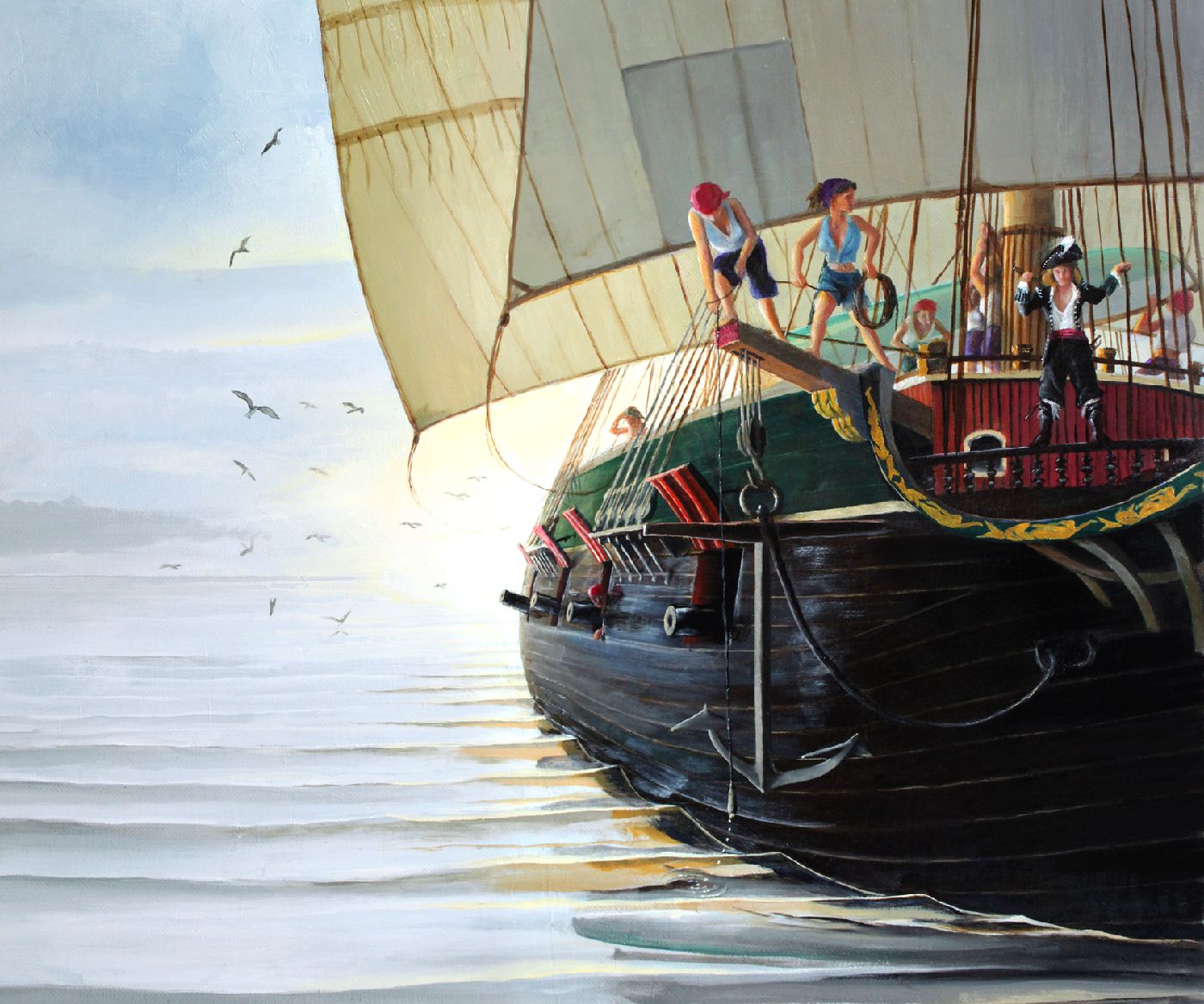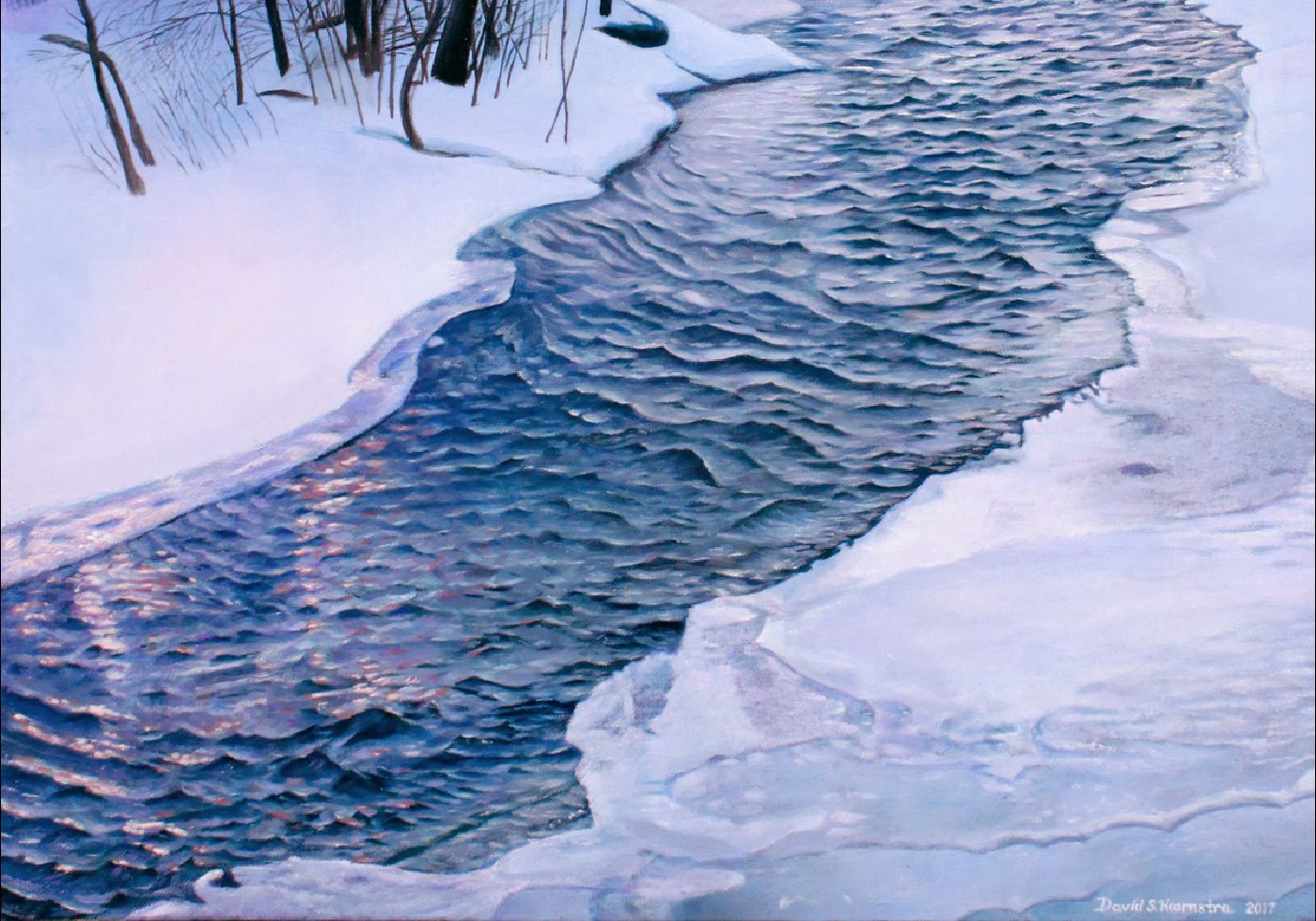
The Photo Trap
I used to say “I paint to share what I find beautiful.” I still do. When I started, without a camera, I had to rely, like the old masters, on my eyes, memory and imagination. My older pictures (Vision of Troy, 1966, left) reflect that.
In my teens I got deeply into photography and pursued it both as part of my commercial art career and as a fine art. Still thinking of myself as a painter, I took many pictures specifically to paint later. Although I took both painting and photography seriously in art school, neither professor warned me about the “Photo Trap.”


